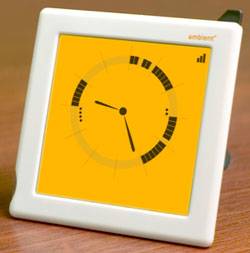During my visit to MIT earlier this year I met up with Henry Holtzman, Chief Knowledge Officer of the MIT Media Lab. We discussed the Internet of Things, which Holtzman has been actively involved in since the 90s. Holtzman said that consumer apps for Web-connected objects are becoming more common; he refers to this as an emerging “ecology of devices.” There are many real world objects being connected to the Internet nowadays, he said, and they are beginning to act in concert.

Read on to find out which Internet of Things products have most impressed Henry Holtzman lately, plus we explore some of his own projects.

Editor’s note: This story is part of a series we call Redux, where we’ll re-publish some of our best posts of 2009. As we look back at the year – and ahead to what next year holds – we think these are the stories that deserve a second glance. It’s not just a best-of list, it’s also a collection of posts that examine the fundamental issues that continue to shape the Web. We hope you enjoy reading them again and we look forward to bringing you more Web products and trends analysis in 2010. Happy holidays from Team ReadWriteWeb!
I started off by remarking that the Internet of Things is ramping up in 2009. Holtzman replied that it’s been many years in the making – for example he did a project back in 1997 involving putting RFID tags onto Pokemon figures. Indeed Holtzman created a commercial company in 1998 to output Internet of Things products.
Consumer Electronics 2.0
A Wired article from February 2000 outlines how Holtzman founded Presto Technologies in 1998, with fellow MIT Lab professors Andrew Lippman (see our recent post featuring Lippman) and Michael Hawley. The Presto network embedded RFID tags in objects. It was an early version of Internet of Things.
The vision for Presto was to make it an e-commerce tool – “products become roving portals for the companies that make them,” according to the 2000 Wired article. While it was too early for that vision to transpire fully, Presto is still operating. One of its current products, PrestoPass, allows consumers to make purchases “by simply waving a card, key tag, or even a wristwatch.”

Nowadays Holtzman refers to this trend as “consumer electronics 2.0.” He cites an MIT spin-off company, Ambient Devices, as one to watch in this area. One of their products is the Ambient Clock, which can hook up to your Google Calendar.
Henry Holtzman’s Favorite 2009 Products
As we’ve been reporting here on ReadWriteWeb this year, there are plenty of Internet of Things products making their presence felt in 2009. I asked Holtzman which products from the current era have particularly impressed him?
He replied that he really likes Violet, the company behind the Nabaztag (a cute robot rabbit that can deliver anything from ambient information, through lights and sounds, to verbal information). We reviewed Violet back in May.
Touchatag (formally known as Tikitag) is another company to have impressed Holtzman. As we wrote in February, Touchatag allows you to program your own RFID tags so that they can do anything you want. Holtzman said that he’s been very impressed by the decisions the company has made, for example using adhesives. He also likes their ‘web 2.0 savvy’ – they host everything, but let the users create the content.

Internet of Things Concepts & Issues
I asked Henry Holtzman what other concepts are interesting him currently, as well as what issues are still to be overcome in the emerging Internet of Things.
He talked about using sensors as an “additional sense,” by putting a tag reader on people. Not dissimilar to another Media Lab project we wrote about recently, a wearable internet system which aims to become a “sixth sense.” Holtzman said that possible uses for sensors on people include: finding objects (for example your keys), raising an alert (e.g. a safety warning), a memory assist device, being a bridge between what you do in the real world and what gets recorded on your social network (e.g. Facebook updating when you’re in certain locations; which we mentioned here).
As for issues: while currently light and temperature sensors are popular, Holtzman thinks that we need to do better job with location. But this is where RFID comes in.
One big issue that Holtzman is concerned about is identity. He told me that mobile phones that interact with objects using NFC (Near Field Communication) will need to work out how to federate around the same ID for a user. This is perhaps similar to the identity issues that the browser-based Web has.
Privacy and security are two other important issues that Holtzman has been focusing on of late.
It was great to speak with Henry Holtzman – someone with extensive experience, both theoretical and practical, in the Internet of Things. Let us know your own thoughts in the comments.










